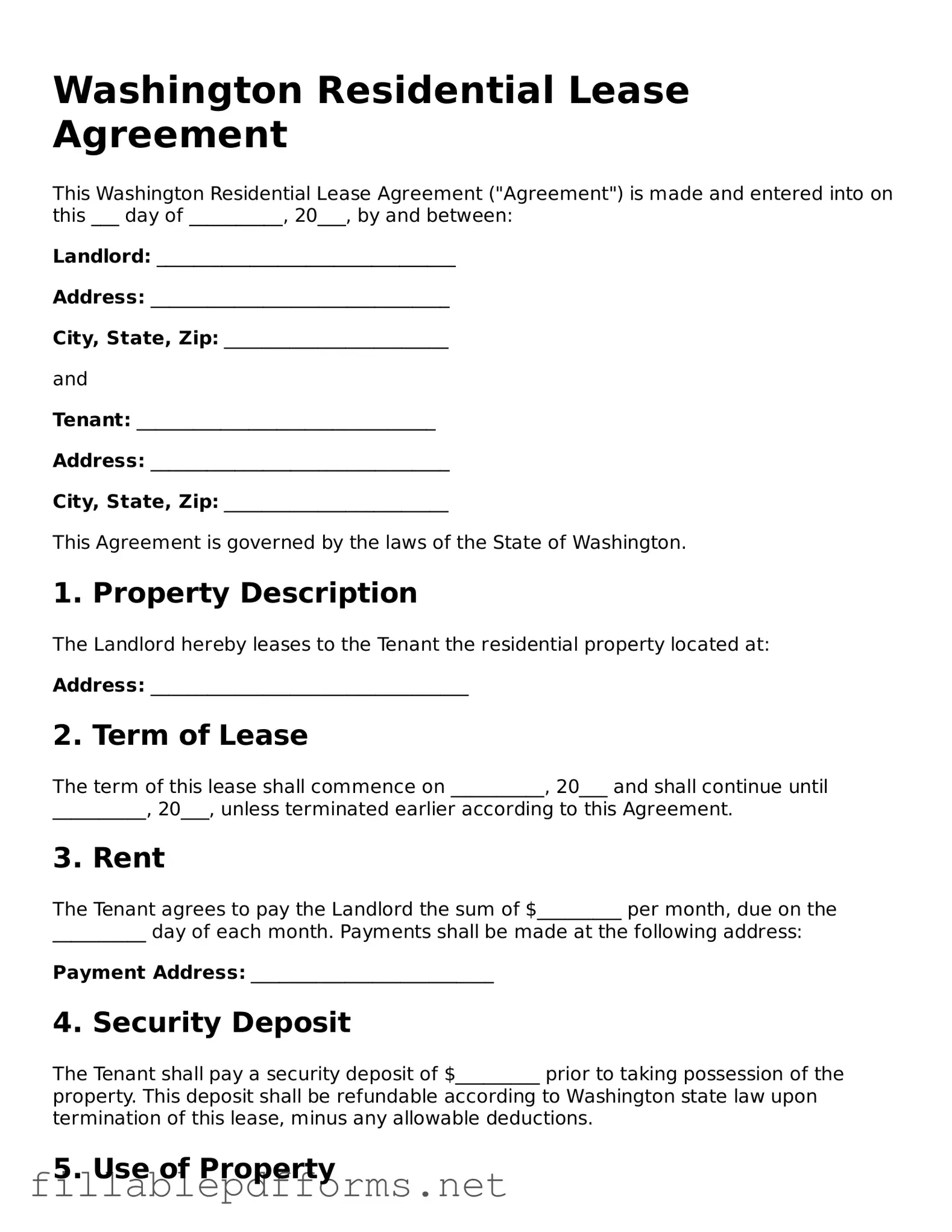Attorney-Verified Residential Lease Agreement Form for Washington State
The Washington Residential Lease Agreement is a legally binding document that outlines the terms and conditions under which a tenant may rent a residential property from a landlord. This form serves to protect the rights of both parties by clearly defining responsibilities, payment terms, and other essential details of the rental arrangement. Understanding this agreement is crucial for anyone involved in renting or leasing residential property in Washington State.
Launch Editor Here
